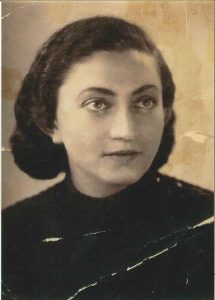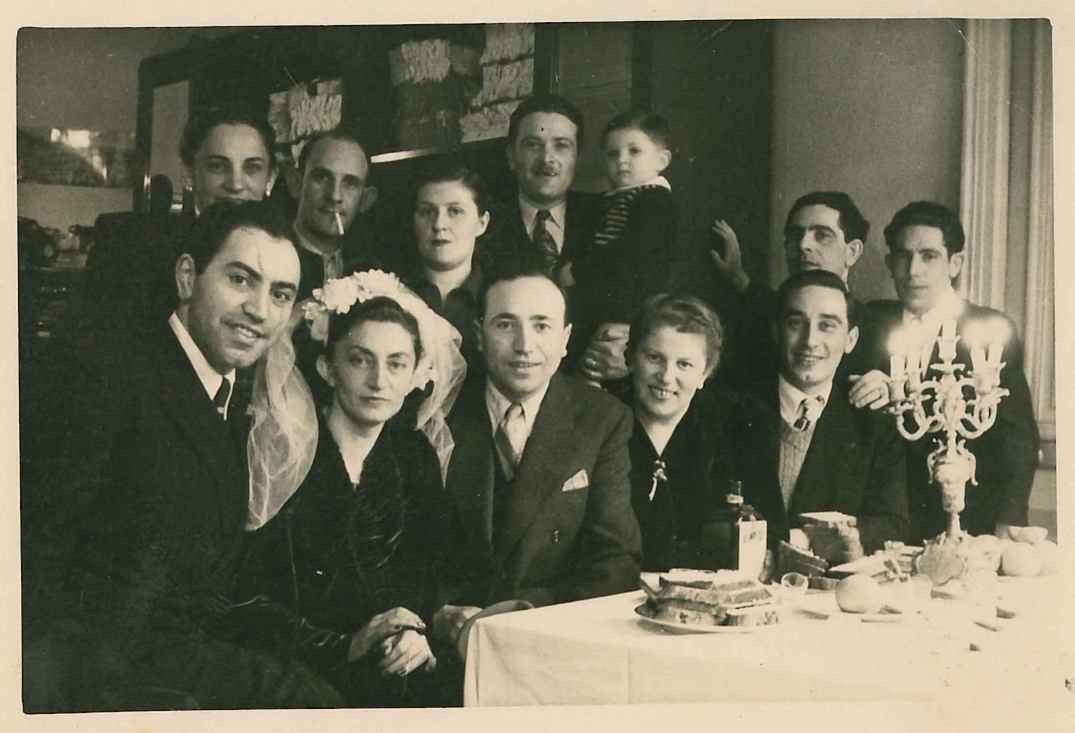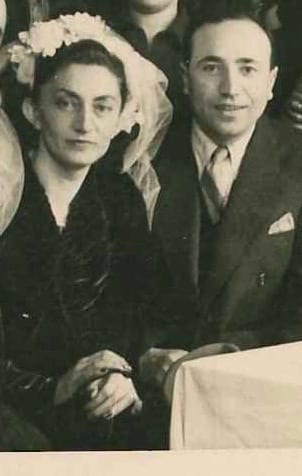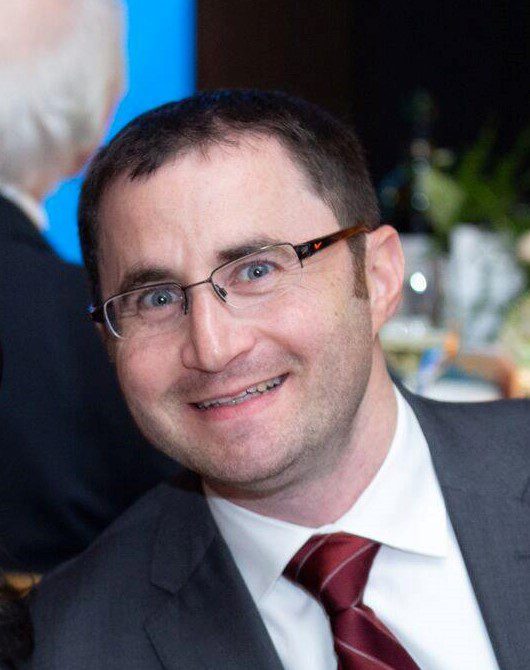- Local Survivor registry
- ROSE WACHS
- Local Survivor registry
- ROSE WACHS
Survivor Profile

ROSE
WACHS
(1918-2002)
PRE-WAR NAME:
ROZA WITES
ROZA WITES
PLACE OF BIRTH:
STOPNICA, POLAND
STOPNICA, POLAND
DATE OF BIRTH:
MARCH 2, 1918
MARCH 2, 1918
LOCATION(s) BEFORE THE WAR:
STOPNICA, TARNOW POLAND
STOPNICA, TARNOW POLAND
LOCATION(s) DURING THE WAR:
SIBERIA (FORCED LABOR), SOUTHERN KAZAKHSTAN
SIBERIA (FORCED LABOR), SOUTHERN KAZAKHSTAN
STATUS:
SURVIVOR, REFUGEE
SURVIVOR, REFUGEE
RELATED PERSON(S):
MUNI WACHS - Spouse (Deceased),
ISRAEL WACHS - Son,
GALE WACHS - Daughter-in-law,
DAVID WACHS - Grandson,
HEIDI WACHS - Granddaughter
-
BIOGRAPHY BY GRANDSON, DAVID WACHS
My grandmother’s name was Rose; however, when I was growing up, I called her Ima. Ima means mother in Hebrew and Yiddish. As a child I listened to my dad who spoke Yiddish with his parents and copied him so grandma Rose was always Ima to me. Since that’s how I know her that’s how I’m going to refer to her as I tell her story.
IMA’S STORY
Ima grew up in a small shtetl/village (population 6,142 with 2/3rds Jewish; the total population would fill the seating in radio city music hall) in southeastern Poland called Stopnitz (Stopnica). The closest large town was Tarnow which was about 35 miles south (population 50,000 with 50% Jewish; the 4th largest Jewish population in Europe in 1939.)
In 1930 Ima was 12 years old, and her mother came down with tuberculosis. She very much wanted to go to school though. Her older brother Kiva, age 15, told her that she must stay home to take care of her sick mother. She grabbed her books and went towards school. Kiva came after her and ripped her books up so that she couldn’t go to school anymore. Ima’s mother died later that year and Ima became in charge of raising her younger brother Schmuel Leibel.
In 1935, Ima was 17 and her family moved to Tarnow to seek work because there was no work for her father in Stopnitz. She worked under her Aunt as a seamstress’ apprentice. While living there, she belonged to a Zionist youth group. (Zionism was a movement for Jewish people to return to their ancestral homeland and create a Jewish state). The group discussed how life was better for Jews in Russia ,and at age 21 when Germany invaded Poland in September 1939, they decided to escape together to Russia.
After they heard about the German invasion, she went back home and told her father what she wanted to do. He pleaded with her not to go saying that it was a bad idea and to stay. He said “Where are you going to go? You have never traveled before and don’t know anyone elsewhere. You can’t go!” However, Ima couldn’t sleep and stayed up all night thinking about it and felt that the Zionist youth group members were correct in their assessment of what was going to happen. In the middle of the night, she cried and made her decision to leave. She kissed her father while he was sleeping and that was the last time she saw him. She then met up with about a dozen of her friends from the youth group and headed east to cross the Vistula River into Russian territory. (about 8-9 miles)
[Prior to the invasion of Poland in September 1939, Germany and Russia secretly met and divided the territories they would seize. It was called the Molotov-Ribbentrop Pact and signed on August 23, 1939. The main divider was the Pisa, Narev, Vistula, and San Rivers. The areas to the east would be Soviet occupied and the areas to the west would be German occupied.]
After she and her friends crossed the Vistula River, they were met by soldiers in the Russian army staring them down with guns pointing at them. The soldiers said “Turn back or we’ll kill you.” So Ima and her friends turned around and went back across the river to the Nazi controlled side. On the western side they were captured by Nazi soldiers and thrown into a barn that was guarded in the front by soldiers. Somehow, a local farmer’s wife sneaked inside the barn and warned everyone that the Germans killed all the people they captured the day before.
Everyone knew they needed to get out of that barn, so they all sneaked back out and decided the only thing to do was to cross the river again to the Russian controlled side. They trudged across the river and were again met by the Russian soldiers once more who said, “Turn back or we’ll kill you.” This time they responded, “If we turn back they will kill us, so you kill us or they kill us, but we are not going back.” Well, they didn’t kill them but they herded them into a cattle car and sent them to a Gulag( official name used for soviet forced labor camps) in Siberia about 2500 miles away.
[Life in Cattle Car: Everyone standing, packed in tightly, with barely any room to move. One corner is for #1 and one corner is for #2]
I don’t know much about life while in the Gulags but I do know that Ima worked as a seamstress putting together uniforms for the Russian army. She stayed in a women’s only barrack and said it was so cold that when you spit, the spit freezes before it hits the ground. I’ve also heard that you didn’t have to work if it’s 50 degrees below zero. How do you know it’s 50 below? If you boil up some water, toss it in the air, and it freezes before it hits the ground then it’s below 50 degrees.
In June 1941, the Germans broke the pact they made with the Russians and attacked Russia. Russia was hurting and needed more man power so they started forming alliances with the allies. In August, 1941 the London-based Polish government in exile signed a military alliance with Russia in Moscow to work together to fight the Germans. In agreement with the alliance, Russia had to free the P.O.W.s from the gulags in Siberia.
After Russia formed an alliance with the Allied countries, Ima was transported from the Gulag in Siberia to a farm in Kazakhstan via a cattle car again about 1500 miles south. The journey took one week she said. She was made to work on the farm until the end of the war. While there she was the only white person on the farm since the other workers had Asian features and were probably from Mongolian descent. One of the only things I know during this time is that she said she ate bear meat and it was the sweetest meat she’s ever eaten. Was that because she was so hungry or because it was really that good?
After the war there was one train provided by the Russians for the Polish refugees to take them from Kazakhstan back to Poland. When she got back to Poland, there was no one really left alive. She lived in Radom, Poland for 6 months with a lady named Ruth and her mother who she knew from her time in the Gulag. One day she saw a man from her home town who said her sister is alive in Heidenheim, Germany in a DP camp(Displaced Persons Camp, a temporary facility for displaced persons coerced into forced migration.) He had seen a posting on a bulletin board from Bella. (Bulletins and word of mouth were the only communication between survivors)
At 28 years old, she went off again by herself and crossed the mountains into Germany in search of her sister, Bella. Bella was married to a man named Motik and had a son, Henri (Hertzl). Motik’s brother David, saved by Schindler, was smuggling Jews into France from the DP camp. Motik and Bella had decided to go with David and live in France and Ima followed.
[DP Camp – Displaced Persons Camp. When people returned to their home towns they had nothing left. No houses, no money, no relatives, and nowhere to live/go. Allies set up DP camps for these people to regroup].—————————————————————————————————————————-
Kiva – crossed to the Russian side. He was kept hidden on a farm by a Russian and his wife. Man passed away during the war and Kiva married the wife after the war.
Bella – stayed in the house until the Germans came. Put to work in the Skarzysko-Kamienna munitions factory. Ended up in a DP camp in Heidenheim, Germany after the war.
Shmuel Lieb – was 9 when the war started, hidden in a monastery, never located after the war. Could possibly have been found by someone in Stopnica working as a dentist.
Editor’s Notes:
Refer to David Wachs in Voices from the Descendants
Refer to Heidi Wachs in Voices from the Descendants
Refer to Historical Notes below for Molotov-Ribbentrop Pact or German-Soviet Non-Aggression Pact -
SURVIVOR INTERVIEW:
Refer to biography written by grandson, David Wachs above.
-
HISTORICAL NOTES:
Molotov-Ribbentrop Pact or German-Soviet Non-Aggression Pact
The terms of the German-Soviet Nonaggression Pact were briefly as follows: the two countries agreed not to attack each other, either independently or in conjunction with other powers; not to support any third power that might attack the other party to the pact; to remain in consultation with each other upon questions touching their common interests; not to join any group of powers directly or indirectly threatening one of the two parties; to solve all differences between the two by negotiation or arbitration. The pact was to last for 10 years, with automatic extension for another 5 years unless either party gave notice to terminate it 1 year before its expiration.
To this public pact of nonaggression was appended a secret protocol, also reached on August 23, 1939, which divided the whole of eastern Europe into German and Soviet spheres of influence. Poland east of the line formed by the Narew, Vistula, and San rivers would fall under the Soviet sphere of influence. The protocol also assigned Lithuania, Latvia, Estonia, and Finland to the Soviet sphere of influence and, further, broached the subject of the separation of Bessarabiafrom Romania. A secret supplementary protocol (signed September 28, 1939) clarified the Lithuanian borders. The Polish-German border was also determined, and Bessarabia was assigned to the Soviet sphere of influence. In a third secret protocol (signed January 10, 1941, by Count Friedrich Werner von Schulenberg and Molotov), Germany renounced its claims to portions of Lithuania in return for Soviet payment of a sum agreed upon by the two countries.
Gulags
The Gulag was the government agency in charge of the Soviet forced-labor camp-system that was set up under Vladimir Lenin and reached its peak during Joseph Stalin’s rule from the 1930s to the early 1950s. Gulag was the acronym fo the Main Administration of Corrective Labor Camps. Typical gulag labor was 14 hours a day of exhausting physical labor.
-
Sources and Credits:
Credits:
“Ima’s Story” by David Wachs, grandson.
The SSBJCC Holocaust Memorial and Education Center gratefully acknowledges the donation of “Ima’s story” by David Wachs and digital historic and family photographs and documents.







